Conor Niland has a confession. When people ask the Limerick native how often he plays tennis these days, he is not totally honest with them.
“See, I get asked this question so much that I lie and say ‘Once or twice a week’,” he admits, grinning. “Because when I say ‘Never’, they say ‘Oh, why not?’ and then I have to explain myself.” He shakes his head. “No, I never play. I get on court with my kids a bit on the weekends because they’re starting to play, but absolutely zero, in terms of a match or a set or a practice. I just don’t find that I’m getting anything out of it…” He trails off. “I’d rather go and try to get better at golf, or something like that. So yeah. I do lie.”
Having read his forthcoming memoir The Racket – which documents the highs and many lows of his career as a professional tennis player – Niland’s answer makes complete sense. So, too, does the smashed racket and the book’s subtitle (“On Tour with Tennis’s Golden Generation – and the Other 99%”), which encapsulates the agony, the ecstasy and the self-deprecating humour of the now 43-year-old Niland’s life as an elite player. He agrees that it is something of a cautionary tale, as well as an entertaining recollection of his tennis-playing life.
“I don’t think you know until you get into it just how competitive it is,” he says, grimacing. “It’s a sport not to be messed with, because it can chew you up and spit you out.”
We meet in a plush Dublin city centre hotel, where most of the patrons are probably unaware that Ireland’s most successful tennis player is in their midst, but that sense of anonymity sums up Niland’s career. He cuts a relaxed, friendly figure, leaning back in his chair as he orders a cup of tea. He is quick to pre-empt another question that he has clearly been asked a lot lately. “Before you ask, no,” he says, shaking his head. “I haven’t seen Challengers yet.”
The Racket’s opening chapter recounts a short period spent as a teenager at the Florida tennis academy run by legendary coach Nick Bollettieri, where none other than Serena Williams – also 16 at the time – hand-picked him to practise with
By his own admission, tennis was a huge part of Niland’s identity for much of his life; his mother Pat and late father Ray, who died in 2013, built a court in the back garden of their Limerick home, encouraging their four children to take up the sport. His eldest sibling Gina enjoyed success and became the Irish No1, while brothers Ross and Ray also played in a less competitive way, but since retiring as a player in 2012, Conor has remained largely on the fringes of the sport. “But obviously, I like to have a project, too. And this,” he says, gesturing to the copy of The Racket on the table in front of us, “is the latest one. I was always quite ambitious, I suppose.” He nods. “I’m pretty laid-back but I’m quietly ambitious as well. That’s probably the best way to describe me.”
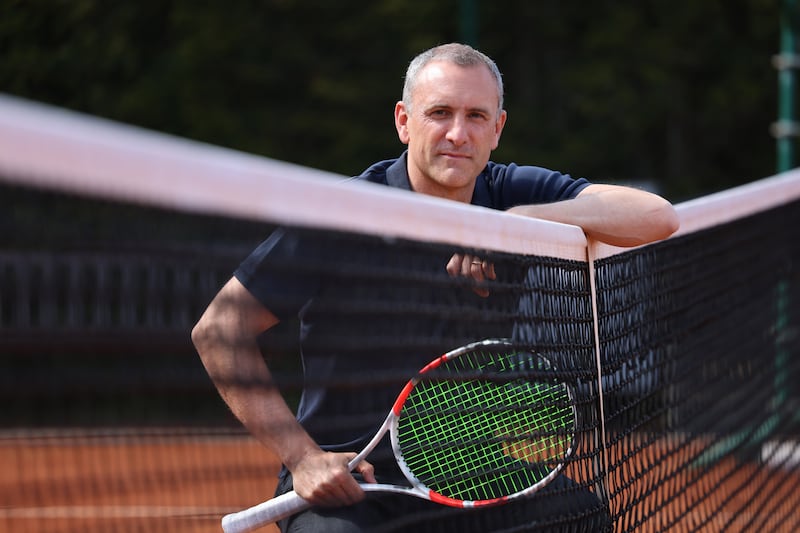
The Racket’s opening chapter recounts a short period spent as a teenager at the Florida tennis academy run by legendary coach Nick Bollettieri, where none other than Serena Williams – also 16 at the time – handpicked him to practise with. Another recounts the time he beat Roger Federer when they were both 12. There are encounters with other big names, including a bemused scene with Andre Agassi and a practice session with his childhood hero Pete Sampras, but The Racket largely shies away from the juicy stories about big stars that usually infuse sporting memoirs.
“Well, I didn’t get to meet them, that’s the problem,” he says, laughing loudly. “I brushed shoulders with them. I think I tried to give a sense of their distance, in some ways; that even when I was in a tournament with them, I still felt like a tourist. There’s obviously some really entertaining insights into what that world looks like, without anything very specific that you could probably say is a ‘juicy story’ – but it’s probably more about creating a picture of what that world looks like. I don’t think that’s really been done before.”
In a career filled with blood, sweat, tears and a fair share of heartbreak, writing the book has been a cathartic experience. He smiles as he notes that at least his family are all still talking to him after reading it. “And in terms of my tennis career, I’m pretty comfortable in terms of what I achieved,” he says. “I feel like it was a difficult journey doing it from Ireland, and I think that gives the book a slightly interesting perspective as well.”
The book recounts several big decisions that he and his parents made; major forks in the road with ramifications only recognised in retrospect. One line, written after recalling how he chose not to accept the offer of a full-time place at Nick Bollettieri’s academy in Florida following his short stint there at 16, seems especially tinged with regret: “Not for the last time in my tennis career,” he writes, “I took the safer bet.” Instead, he returned to English boarding school Millfield and later went on to the US college tennis circuit after being offered a scholarship at the University of California in Berkeley.
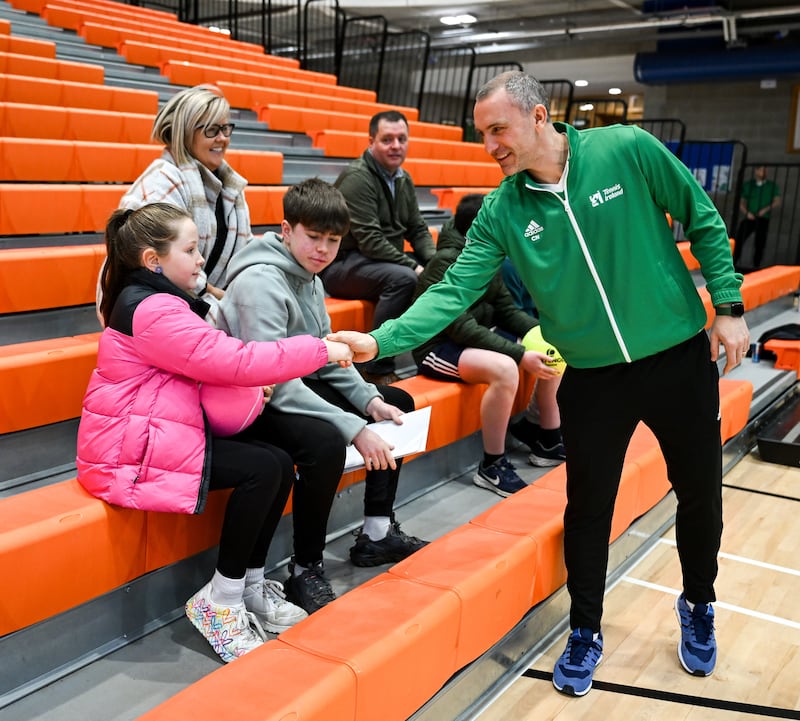
He sighs softly, nodding. “I suppose in hindsight, it’s obvious now that going to Florida would’ve been much better for my tennis. But it was never even discussed in depth; it was almost a little bit like, ‘Did ye hear yer man offering us…?!’ So I think it was probably the wrong decision, but at the same time there are a few cautionary tales of people who’ve gone through those tennis academies. Back in those days, it was more, ‘you’re either going to be a top 100 pro after this, or you’ve failed’. Now it’s a bit more holistic: ‘We’re gonna get people through to Princeton and Stanford, as well as people who’ll get to play on the tour.’ So it’s a safer environment in that sense, I would say.”
‘It was the TG4 recording, so it was all Irish commentary and I’d no real idea what’s being said. But we sat there and watched the full four hours, and we were able to really dig into my emotions’
— Conor Niland
His time playing college tennis did pay dividends in terms of experience, and after years of grinding out results on the Futures and later the Challengers circuits, Niland eventually qualified for his first Grand Slam event. Playing Wimbledon was a lifelong ambition of his, but the chapter of The Racket that recounts his first-round match against French player Adrian Mannarino makes for painful reading. With a dream second-round tie against his childhood competitor Roger Federer on the iconic Centre Court within touching distance, the unravelling of Niland’s game is both an excruciating and powerful depiction.
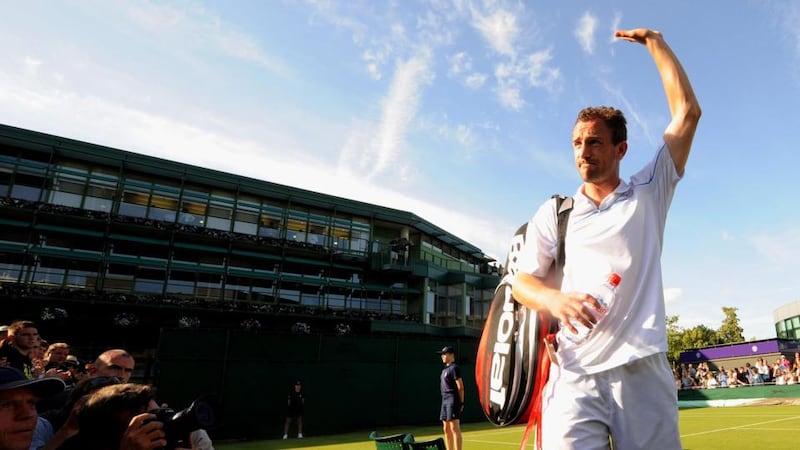
Niland had never watched the four-hour match back, but sat down with sports journalist Gavin Cooney, who helped him with the book, to relive the onerous experience. “Somebody who has read it said to me, ‘If it’s any consolation, the fact that you lost has made the book a lot better,’” he says with a wry smile. “I was like… ‘Umm, great!’ It was the TG4 recording, so it was all Irish commentary and I’d no real idea what’s being said. But we sat there and watched the full four hours, and we were able to really dig into my emotions and build the chapter in real detail. Was it cathartic? Yeah, I think it was. And it was tough, as well – seeing my dad in the crowd when I was watching it was definitely an emotional one. I think it’s something that hasn’t been done before; you’re getting inside the mind of a tennis player.” He sighs softly, smiling. “It was a chapter that had to be written, I suppose.”
[ Sporting upsets: Niland comes agonisingly close to a date with FedererOpens in new window ]
He mentions in the book how he still thinks about that defeat, and what might have been, virtually every day since it happened almost 13 years ago.
“I was over at my in-laws last Monday, and somebody said something about the Centre Court at Wimbledon and I went ‘Ugh! I was seven points from Centre Court!’,” he chuckles. “But it’s not as regular as it was. A few years ago, it was definitely every day. Not in an ‘on my knees crying about it’ kind of way, but it would’ve popped into my head. Watching Wimbledon for the first couple of years after it was tough, but look – it’s water under the bridge, a little bit. And I’m okay about it now.”
In an ideal world, he says, he would have played “fifteen Grand Slams”, given the huge support he received that day: never before has The Fields of Athenry been sung at Wimbledon. “I think the Irish got such a kick out of me playing at Wimbledon, so it would’ve been amazing to go and do that every year, when everyone would know it was coming and be prepared for it. But unfortunately, there was just the one chance.”
The blow was softened some months later, when he had the opportunity to play his second Grand Slam event, this time at the US Open, where he was drawn against none other than world No1, Novak Djokovic. Yet disaster struck again, when he contracted food poisoning in the days leading up to the match. He can smile about it now. Sort of.
“When I got the note that it was Djokovic, I was really excited and really pleased, but I wasn’t sick at that time,” he says. “And then over the next 24 to 36 hours, it came on and I was like, ‘Oh my God, what’s going on?’” He shakes his head at the memory. “I think it was Johann Cruyff who said, ‘Every disadvantage has an advantage’. So my take on the whole thing is that if I’d gone out and played Djokovic healthy, I obviously would have played better – but I still would’ve probably lost 6-1, 6-1, 6-1, and it wouldn’t have made quite as interesting a chapter of the book.”
He laughs, clearly accustomed to looking on the bright side – a quality he insists has been learned over the years. “It was a very weird couple of days. I was playing great tennis at the time; I’d stumbled over the line a bit at Wimbledon in terms of qualifying, but for the US Open I was playing really well and if I’d played somebody ranked 40 or 50 in the world, I would’ve had a really good chance of winning.”
One obvious takeaway from The Racket is that the lack of support and infrastructure for promising Irish tennis players is an issue, and remains so to this day. Niland, who was born in Birmingham before his family returned to Limerick when he was two, could have declared for England and given himself an instant advantage in terms of coaching, facilities and wild card entries into events, but it was always important to him to represent Ireland.
“It was the environment and the culture I’d grown up with, I suppose,” he shrugs. “The guys that I’d looked up to were on the Davis Cup team, like Owen Casey and Scott Barron and my sister, all these players. I was practising with them from the age of 13 or 14, and I never really considered myself anything other than an Irish tennis player. And I felt like there was some benefit, or maybe novelty of being the first Irish guy to do x, y and z. That kind of motivated me in a way that being the 5th or 6th best player in Britain wouldn’t have. That drove me.”
It seems as though certain ghosts have been laid to rest with The Racket, 12 years after Niland’s decision to retire. At the time, he cited his ongoing hip injuries as the primary reason, but really, he says, he had had enough of the long stints away from home for little financial reward and often only fleeting recognition.
‘I think it probably drives me as well, the whole impostor [syndrome] thing. I didn’t put it in the book, but my dad always used to say, “You should be more arrogant.” He’d use that word on purpose, because it’s obviously a provocative word’
“I’d ticked those ‘play Grand Slam’ boxes and I was going to have to have hip surgery, which would’ve meant six months out, falling down the rankings and having to climb that ladder again,” he nods. “I’d met [his now-wife] Síne the year before, I was gonna be 30 weeks of the year on the road to maybe play a couple more Grand Slams, and I was going to turn 31.” He sighs. “It wasn’t a career-ending injury, and I could’ve fought on like Andy Murray is doing – but I wasn’t prepared to get a metal hip to go back out on the Challengers circuit.”
[ First encounters: Conor Niland and Síne LambertOpens in new window ]
He admits that even in his current career in commercial property, he is still dogged by “impostor syndrome”.
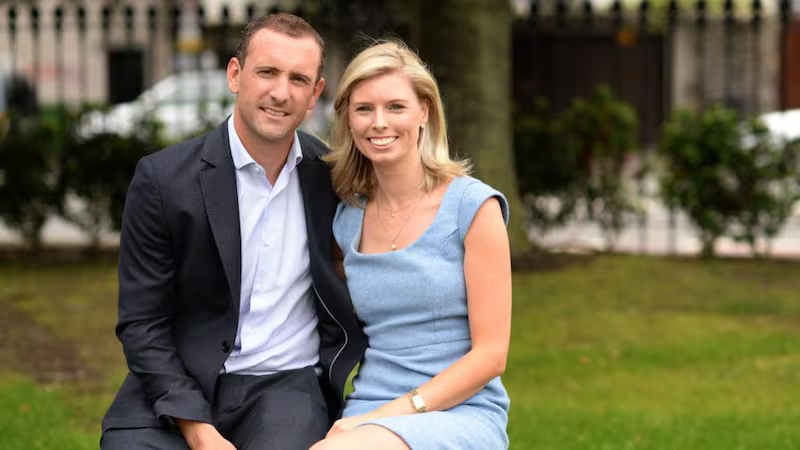
“I can’t wait for my boss to read that,” he notes. “I’ve no idea why that is, but I think it probably drives me as well, the whole impostor thing. I didn’t put it in the book, but my dad always used to say, ‘You should be more arrogant.’ He’d use that word on purpose, because it’s obviously a provocative word.” He shrugs again. “I don’t know. That’s a terrible answer, but I don’t.”
In recent years, both his wife and their two children, Emma (7) and Tom (5), have taken up tennis, just as he has made efforts to leave his playing days behind. “Síne keeps sending me videos of stuff she finds on the internet, of how to hit a good forehand, and I’ll be like, ‘I know this! Why are you sending this to me?’” he laughs. “So it’s coming back around. You just can’t get away from this sport.”
He may not play any more, but he still keeps up with the tour and remains a self-confessed “tennis nerd” – it’s necessary in his current role as the non-playing captain of the Irish Davis Cup team, he says. And he hasn’t ruled out a return to coaching, which he briefly dabbled in post-retirement, perhaps when his kids are older. I remind him how he once mentioned in an old interview that he was determined not to be a ‘tennis dad’. “Oh, I’m definitely a tennis dad. I already broke that promise,” he says. “But I think ex-tennis players can be a bit hands-off because they know too much, almost. I’m definitely not out with a trolley full of tennis balls at seven in the morning, but I am getting them on that path. But they’re playing lots of different sports, so we’ll see.”
The million-dollar question is, having relived his tennis career in such intricate, gruelling detail, reaching a career-high ranking of 129, would he do it all again? He leans back in the chair again, contemplating the question. Like his relationship with tennis, it’s a complicated one.
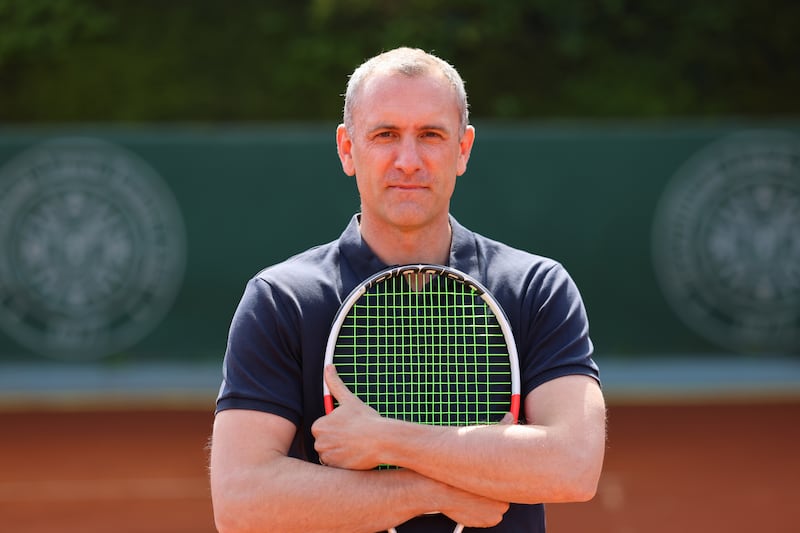
“I’d do it all again, but I’d do it all again a little bit differently,” he says. “I’d probably stay at Bollettieri’s, or go to Spain instead of Millfield for two or three years. But there are lots of things like that. But yes, I would do it again – foolishly or not. Listen, if you’d told me when I was 12 that I would’ve played Wimbledon, I wouldn’t have believed you. And if you’d told me I would’ve written a book about the experience, I definitely wouldn’t have believed you.”
He laughs, always ready to look for the advantage in the disadvantage. “Whether the book sells one copy or whatever, it’s been a great experience. The process has been really amazing.”
The Racket by Conor Niland is published on June 6th.










